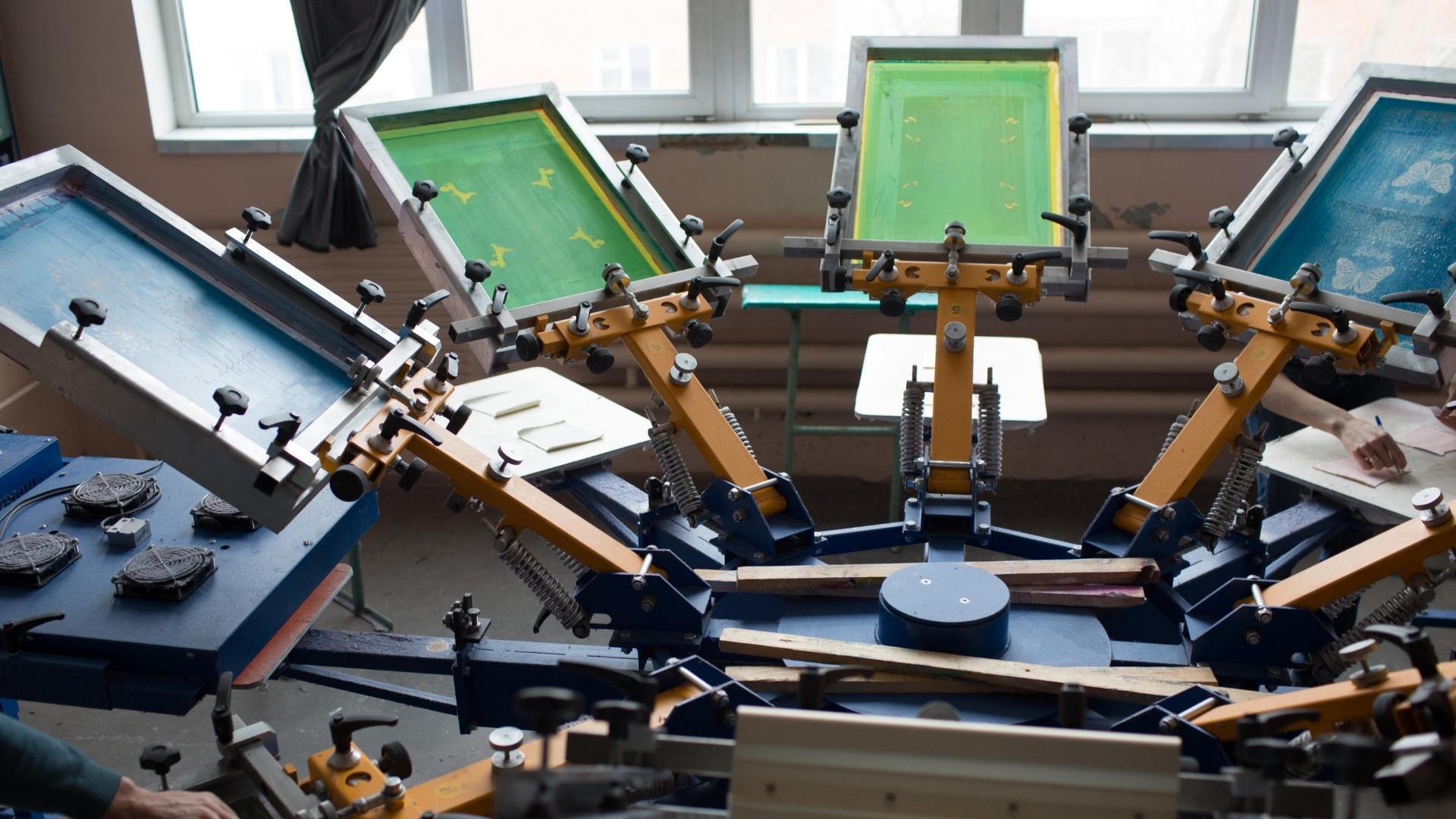ChatGPT said: 10:9 Design Screen Printing Texas: pricing explained
Wiki Article
The Crucial Guide to Understanding Screen Printing and Its Versatile Makes use of
Screen printing has a rich background that dates back to old times, developing into a sophisticated strategy made use of across various markets today. This guide discovers the details of the screen printing process, outlining its applications in home, fashion, and advertising design - 10:9 Design Company. Comprehending these basics can open up innovative potential for both artistic and business tasks. The complying with areas will certainly reveal vital tips and strategies to improve one's screen printing undertakingsThe Background of Screen Printing
Screen printing has origins that trace back centuries, its development reflects the technical and creative improvements of numerous cultures. Originating in old China, the strategy was at first used for embellishing fabrics and later infect Japan, where it ended up being important to Ukiyo-e woodblock printing. The approach shifted to Europe in the 18th century, where it obtained appeal among craftsmens and business printers. The innovation of photo solution in the 20th century changed screen printing, permitting even more complex layouts and better efficiency. Musicians like Andy Warhol additionally pushed its appeal, making use of the medium to produce legendary jobs that mixed commercialism and art. By the late 20th century, screen printing had established itself as a functional method, employed in vogue, marketing, and great art. Today, it continues to progress, incorporating digital modern technology and broadening its applications across numerous sectors.The Screen Printing Process Explained
Screen printing transforms imaginative visions into substantial designs via a collection of exact steps. An image is created and after that moved onto a screen, typically made of fine mesh material extended over a structure. A light-sensitive solution is used to the screen, which is revealed to light, hardening in locations not covered by the image. After rinsing the unhardened emulsion, a stencil is developed.Next, the screen is positioned over the substrate, whether it be textile, paper, or another product. Ink is then pressed through the open areas of the stencil using a squeegee, depositing the style onto the substratum listed below. This process can be repeated for numerous shades, requiring different screens for each and every hue. The printed product is cured utilizing heat to assure the ink sticks appropriately, resulting in a long lasting, lively layout all set for usage.
Types of Screen Printing Techniques

Additionally, specialty techniques, such as discharge screen printing, eliminate color from the textile to produce softer prints, while foil screen printing uses metallic foil to attain a glossy finish (10:9 Design LLC Company). Each method offers unique qualities, accommodating numerous creative requirements and manufacturing ranges, ultimately broadening the opportunities within the screen printing domain name
Applications of Screen Printing in Various Industries

Furthermore, the signage and marketing industries make use of screen printing for creating captivating display screens and banners. This approach permits bold shades and complex styles that record focus. In electronics, screen printing is employed for applying conductive inks to circuit boards, important for component connections. The home style industry accepts screen printing to create distinctive styles on fabrics and wall art. Generally, screen printing serves as an important device throughout varied fields, boosting products with personalized and visually enticing graphics.
Tips for Effective Screen Printing Projects
While undertaking a screen printing job, cautious focus to information can substantially improve the last outcome. First, picking premium materials is vital; this includes the screen, inks, and substrates. Using appropriate mesh matters can impact ink deposition and information resolution. Prep work is similarly crucial; extensive cleansing of displays and appropriate direct exposure times ensure crisp prints.Next, exact registration is important for multi-color prints. weblink Utilizing placement tools can help attain exact layering. In addition, testing prints on scrap products before manufacturing aids recognize possible issues without wasting resources.

Frequently Asked Questions
What Products Are Ideal for Screen Printing on Fabric?
Cotton and polyester blends are excellent for screen printing on fabric as a result of their sturdiness and ink absorption. Additionally, specialty textiles like silk or canvas can generate special appearances and surfaces, improving the total style high quality.How Do I Clean and Maintain Screen Printing Devices?
To clean up and maintain screen printing tools, one should frequently wash screens with proper solvents, check mops for wear, oil moving components, and shop all products in a dry, dust-free atmosphere to extend their life expectancy.What Are the Ecological Influences of Screen Printing?
Screen printing can have significant ecological impacts, including chemical waste from inks and solvents, water use throughout cleaning procedures, and energy consumption. Sustainable techniques and environmentally friendly materials are essential for decreasing these negative effects.Can Screen Printing Be Done in your home Successfully?
Screen printing can be efficiently done at home with the right products and methods. Enthusiasts can produce top quality prints, though success depends upon their skill degree, devices, and understanding of the procedure included.
What Are the Costs Linked With Starting a Display Printing Business?

Beginning a screen printing service includes prices for devices, materials, and work space. First expenses commonly range from a couple of hundred to a number of thousand bucks, depending upon the range, high quality of machinery, and desired manufacturing capability.
Screen printing has an abundant background that dates back to ancient times, advancing into a sophisticated strategy made use of throughout numerous markets today. An additional strategy, rotary screen printing, uses cylindrical screens, facilitating constant printing on textile rolls, thereby improving effectiveness for large productions. Additionally, specialty methods, such as discharge screen printing, eliminate color from the look at these guys material to develop softer prints, while aluminum foil screen printing applies metal aluminum foil to accomplish a shiny coating. In the style market, screen printing is commonly made use of to develop lively styles on garments, allowing brand names to showcase their special designs. Cotton and polyester blends are suitable for screen printing on material due to their longevity and ink absorption.
Report this wiki page